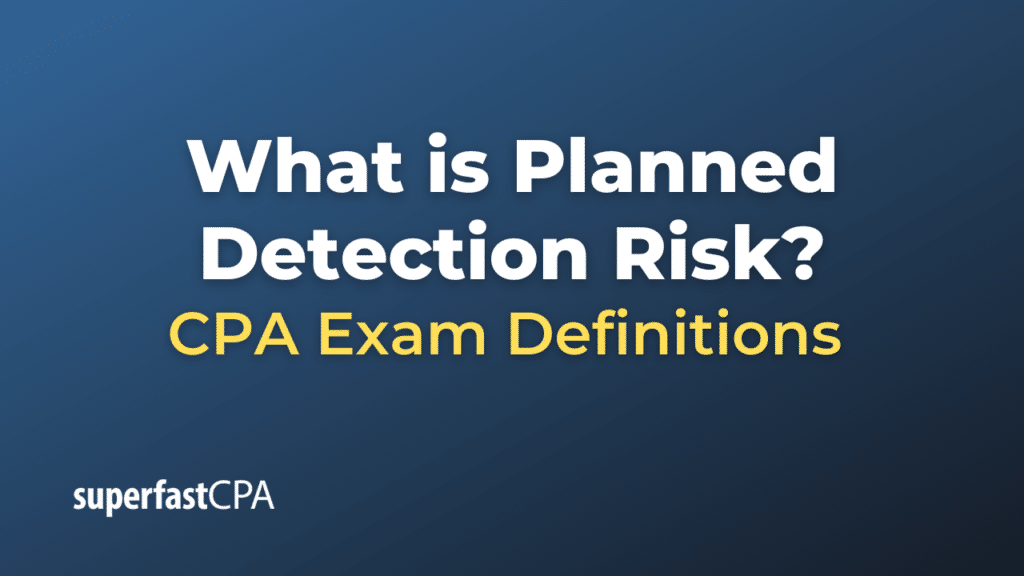Planned Detection Risk
Planned Detection Risk, also known as Detection Risk, is a concept used in auditing. It refers to the risk that an auditor will fail to detect material misstatements in a company’s financial statements.
The risk is associated with the procedures and techniques that an auditor uses during an audit. If those procedures are not effective, there’s a risk that the auditor might not identify errors or irregularities that could materially affect the financial statements.
Detection risk is one of three elements that comprise audit risk, along with inherent risk and control risk:
- Inherent Risk: The susceptibility of an assertion about a class of transaction, account balance, or disclosure to a misstatement that could be material, either individually or when aggregated with other misstatements, before consideration of any related controls.
- Control Risk: The risk that a misstatement that could occur in an assertion about a class of transaction, account balance, or disclosure and that could be material, either individually or when aggregated with other misstatements, will not be prevented, or detected and corrected, on a timely basis by the entity’s internal control.
- Detection Risk: The risk that the procedures performed by the auditor will not detect a misstatement that exists and that could be material, either individually or when aggregated with other misstatements.
The level of detection risk is inversely related to the levels of inherent and control risk. That is, the higher the inherent and control risks, the lower the acceptable level of detection risk, which means the auditor should gather more substantive evidence during the audit to reduce the detection risk. Conversely, if inherent and control risks are low, an auditor can accept a higher detection risk and therefore may gather less evidence.
Example of Planned Detection Risk
Suppose you’re an auditor for a large, multinational corporation. You’re planning your audit and assessing your audit risk, which includes your detection risk.
- Inherent Risk: The company operates in an industry that’s highly susceptible to rapid changes in technology and market trends. This could lead to potential obsolescence of inventory, increasing the inherent risk.
- Control Risk: Upon reviewing the company’s internal controls, you find that they’re generally strong. However, you identify some weaknesses in controls over inventory valuation due to inadequate reviews of the inventory obsolescence reserve. This contributes to control risk.
Given these assessments, the inherent and control risks are relatively high due to the industry’s volatility and control weaknesses over inventory valuation.
- Detection Risk: Because of the higher inherent and control risks, you decide to lower the detection risk. This means that you plan to perform more extensive substantive testing to catch any potential material misstatements that might exist in the financial statements, particularly those related to inventory valuation. Your testing might include more detailed reviews of inventory records, more extensive physical counts of inventory, or in-depth analysis of the calculations for the inventory obsolescence reserve.
Remember, in reality, these assessments and determinations would involve much more detailed analysis and professional judgement. This is a simplified example to illustrate the concept of detection risk and how it fits into the overall audit risk model.













